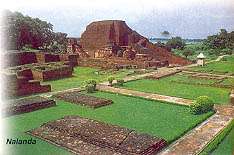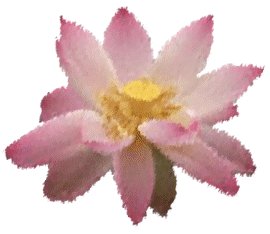
![]()
The Philosophy of the Different Sects of Buddhism
In this earth, there are many kinds of Buddhist temples that have very different characteristics but yet still are Buddhist temple. One can look at how Japanese Buddhist temple was built, and Chinese Buddhist temples in China, The Potala Monastery in Tibet, Borobodur in Indonesia, the ruins monastery temples in India such as Nalanda and Jetavana, Buddhist temples in Thailand all bears different characteristics, not because of their culture difference but because of their interpretations of Buddhism philosophy.







Hinayana/Theravada (Way of The Elders) Philosophy of Buddhism
Theravada's philosophy towards Buddhism is to follow the foot steps, the way of life of the Buddha, to train oneself towards enlightenment. That is why one has to be admitted into the Sangha to be monk and practice receiving alms like the Buddha and his disciples did. The Theravada temple is a very simple temple with simple layout that focuses on the image of Sakyamuni Buddha for education. For the Theravada, the world is impermanence and practice simple livings a moment at a time.

Mahayana Philosophy of Buddhism
Mahayana's philosophy towards Buddhism focuses on devotional which requires its adherents to put full faith in the Buddhas and Bodhisattvas who possess the infinite power to save all beings. It is the path of compassion to sentient beings.
During Sakyamuni Buddha's time in this earth, apart from the teachings of cultivation, he also revealed other Buddhas and Boddhisattvas who most of them are not historical figures who save beings from the cycle of rebirth. (Sakyamuni Buddha or Siddharta Gotama is a historical figure that lived in India) Hence the Mahayana apart from taking refuge (meaning to follow the path of enlightenment under the guidance of) in Sakyamuni Buddha, The Dhamma, and the Sangha , also took refuge in other Buddhas that has been described. Their sutras includes all from the Theravada's and additional sutras of other Buddha's that have been orally transmitted from Sakyamuni Buddha (Siddharta) during his live. It forms another level of interpretation of the Buddha's teaching.
Mahayana sect gains much popularity especially in China because Mahayana's teachings was not a rejection of people's ethnic faiths so that their Gods and spirits were absorbed into its vast pantheon (temple). This happened in China, Japan and Tibet too where the temple are very much influenced by local beliefs and much more elaborate in design. Unlike the Theravadas the Mahayana began to associate every Buddhas and Boddhisattvas with certain quality and represents certain meaning to guide them to the path that very much influence the temple.
Apart from Vajyarana sect, there are numerous schools establish in China. The reinforcement of the Mahayana schools in China to be popular is that it is believed some Boddhisattvas took reincarnation in China to help sentient beings. After their passing, their abode became a place of pilgrimage. This includes the Er-Mei mountain,Wu-Tai mountain and Miao-Shan mountain where thousands of temples sprang up. It is believed to be the abode of Pu Hsien, Wen Shu Li, and Kuan Yin Boddhisatvas respectedly. This temples have a very much resemblance of Taoist and very much permanent. The monks on the other hand was performing a service to mankind rather than self cultivation.

Zen School of Buddhism
Zen School is one of the Mahayana school that spread it's teachings to Japan and became the pillar of Japanese Buddhism. The founder of Zen school is an Indian monk named Damo (Boddhidhamma) who is also the 28th Patriarch of Buddhism from India who preached in China. He founded the Zen school in China and interpreted the Buddha's teaching in very simple way -'Vast Emptiness'. Hence this philosophy was spread to the Japanese Buddhism and the way their temple was built was very functional and empty. Some might not even contain any images for the 'Vast Emptiness' theory is to empty ones mind to gain enlightenment.

Vajrayana Philosophy of Buddhism
Vajrayana sect of Buddhism is a sect that focuses on mantra chanting and other religious ceremony. It can be said that it is an offshoot of Mahayana because Vajrayana too believe in local Gods, many Buddhas and Boddhisattvas as well as magic in Buddhism. Vajrayana believes in ritual practices and teaches that every Buddha and Boddhisattva is associated with a particular mantra which when recited or performed well can link one with the deity and partake its transcendental powers.
It is believed that Buddha Sakyamuni and other Arahants too themselves during their lifetime after their enlightenment could perform miraculous magic thus became a divine human. Vajrayana's temple are mostly associated with divine objects or symbols and mysticism.

Previous Next
![]() This
is a thesis website by ressox studio.
This
is a thesis website by ressox studio.

